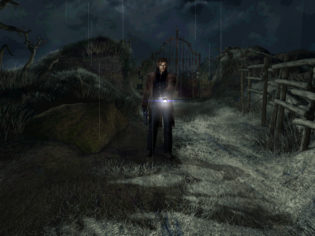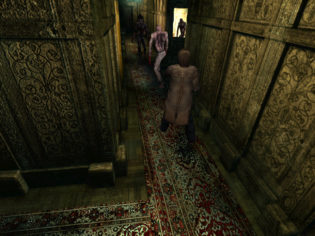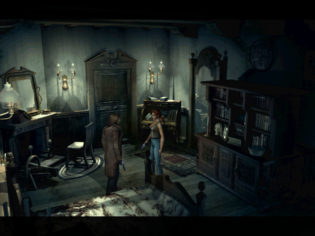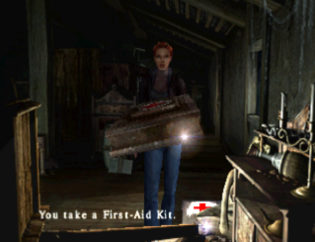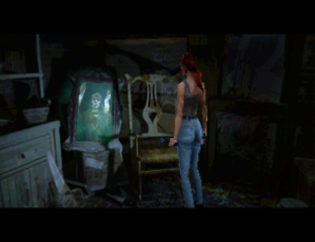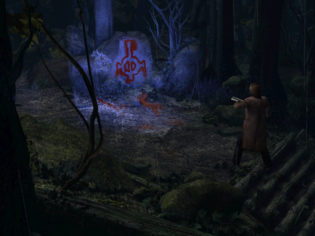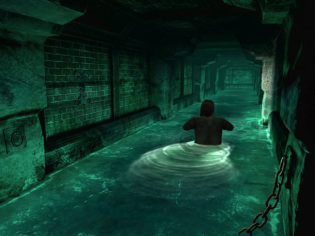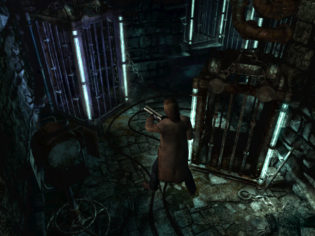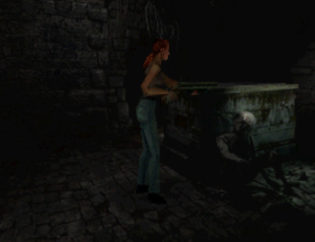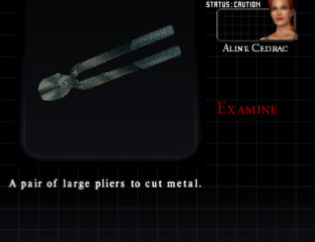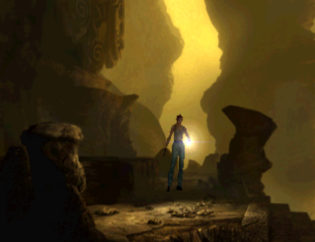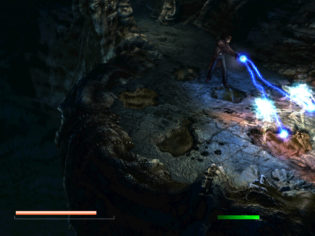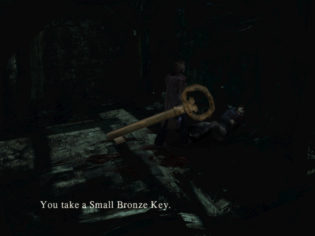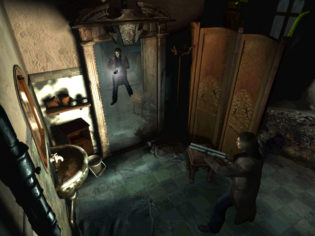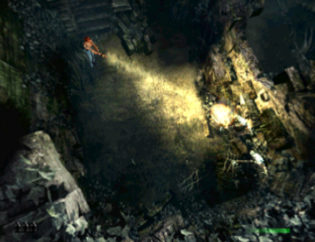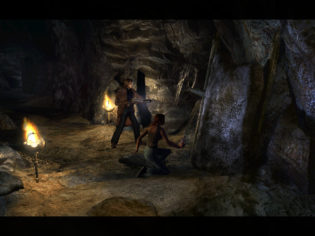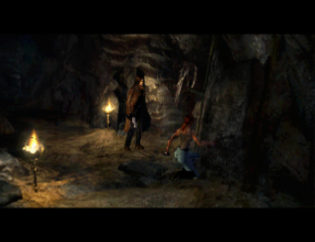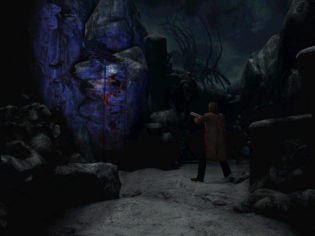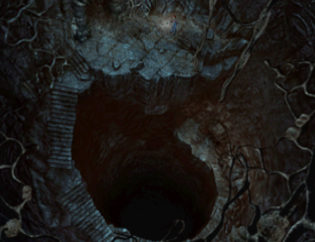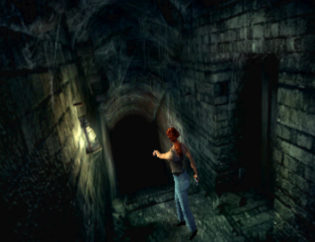O tempora is a series of retrospective posts where I play games from ages before to see if they stood the test of time.
Now that the original trilogy is out of the way, I can talk about the Alone in the Dark game I’ve played the most – Alone in the Dark: The New Nightmare. The first and so far only reboot of the storyline. You see, for all the convoluted storylines, the original trilogy and the 2008 game are actually part of the same timeline. Even the horrible and rightfully forgotten spin-off Illumination was technically part of the same world. But with The New Nightmare the series attempted a fresh start headed by Darkworks, whom I recently talked about when revisiting Cold Fear. And it did many things right and a few things very wrong.
I’ll start by saying that for this revisit, first one in about 12 years, I’ve decided to play two versions of the game – the original Playstation release and the PC port, that is currently available digitally at GOG. The reasoning behind this is quite simple – the PS1 version is the one I’ve played the most and it is the original release of the game. However, the PC version is the one more people have access to nowadays and it looks better. But I’ll discuss the ports of the game later. For now, I just wanted to mention that the screenshots in the retrospective review are a mix of the PC version running at 1920×1440 and upscaled PS1 screenshots that I took with Duckstation that ran the game at native resolution.
What is Alone in the Dark: The New Nightmare? It’s a classic survival horror that follows the formula established by the original Resident Evil. Which is a bit ironic, given that the original AitD trilogy established a lot of concepts to 3D action adventure titles that RE1 would inherit. But by 2001 RE and Silent Hill were the template for the genre and The New Nightmare followed it. As such, you have things that were in the original AitD games, like tank controls, separate aim and explore modes, fixed camera angles, pre-rendered backgrounds, ability to push some items. But also things that became the standard since then, like separate button hold to run, switch between exploring and aiming set to a button instead of a menu option, max health limit, limited save items, more contextual interactions, a separate map screen that shows room transitions that are open or closed… Even nice quality of life things like quick turn or aim and walk were available.
The New Nightmare had a few unique ideas as well. The lighting in the game worked wonderfully with pre-rendered backgrounds. This meant that the visuals could be more beautiful than what Silent Hill 1 could do with its real-time 3D, without the typical drawbacks of pre-rendered backgrounds, where you had a very clear distinction between what’s 3D and what isn’t. Granted, Nocturne from 1999 already existed and had an even more technologically advanced look, but that game ran poorly on PCs and, frankly, overall looked worse anyway. The New Nightmare also used this dynamic lighting for combat and puzzles… well, a few times at least. And its biggest claim to fame in terms of mechanics was the fact, that you had two distinct characters to play as. And while a few of the locations were shared between them, a lot of the gameplay was not. So you had the promise of the “zapping system” from Resident Evil 2 realized in full, and far better than any other game has done at the time or ever since.
It’s a really cool but risky idea – have one story that requires two playthroughs to experience properly. Why risky? As Capcom knew already, a lot of players didn’t play a second scenario in RE2, so keeping a huge chunk of content “locked” behind a second playthrough of the game could mean that players won’t see it. Nonetheless, Alone in the Dark: The New Nightmare does this as honestly as it can, so despite sharing the initial “spooky mansion” location, the paths of two characters are not just different but also canonical to each other. At its best, this leads to some really cool situations where you get characters exploring their unique locations and via radio helping each other to solve puzzles. But at its worst, you get absolutely idiotic moments where one of the characters must trigger a story scene so a random location elsewhere becomes unlocked. Because as far as the story is concerned, that second spot was unlocked by the other character in the meantime which you have no way of knowing about.
The game in general is rather poor at explaining things. It has a cool mechanic of radio conversations that can be triggered at any point and oftentimes it provides puzzle hints or even straight up puzzle answers. But when they’re most needed they are not available or don’t help at all. Game has an insane amount of written text for you to read with good worldbuilding and “lore”, but sometimes it leads to searching for a hint you remember seeing somewhere among a 40 page document. Keys do not get used automatically from the inventory – you have to manually use them. And some of them provide an explanation about where you must use it if you Examine them. But some do not and some are marked in a way that adds confusion rather than removes it.
The combat design is especially poor. You can have rooms where you enter and get hit before you can even process what’s going on. You can’t hit enemies with most weapons unless the character auto-aims at them. And this sometimes fails to happen at point blank range. Bosses are an absolute travesty – they have insane i-frame windows that can waste your ammo, have way too much health and are also buggy. There are two bosses that may randomly become invulnerable if you’re unlucky, but even apart from combat you can casually walk out of bounds in a few rooms or pick up items from closed containers. And by the end, the game starts completely falling apart clearly showing that it had to be rushed past a certain point and a good chunk of it was simply underdeveloped.
Yet, there’s so much charm in it. The music is weirdly noisy and harsh, but is also very memorable. The light affects some enemies, leading to unique situations where you can get them to stay back by just aiming the flashlight at them. And there are several puzzles, where the game tracks your light beam – I still love the idea of having a makeshift blacklight showing you symbols drawn in blood for a puzzle and it’s a shame almost no other action adventure game does this. The story is a fun Lovecraftian experience, but with a more scientifically explained twist to it. The banter between two main characters is really fun. The script is not fantastic, but it works and even the fact that it differs between the scenarios to better fit the side of the story you’re experiencing isn’t as frustrating as I remembered it being.
As for the versions of the game, there is no good answer about which one you could play. The original PS1 version is very low res and has slight pauses between each screen and before each dialogue line. Dreamcast port is, arguably, the superior version of the game that has much higher resolution visuals for pre-rendered backgrounds, 3D models and videos and it also has some changes to the intro cutscene. PC port is based on the Dreamcast version, but can run at even higher resolutions, looking very good and it has no delays or pauses for scene transitions. However, it’s also not very stable, all of its sounds are of lower quality with noticeable clipping, it lacks the motion blur effect in cutscenes and while it supports the gamepad controls, they are inferior to what you could get with other versions. It also weirdly increases the amount of save items by 5 for each one you pick. I have never seen the PS2 port of the game, but from what I’ve read it was not too different from the Dreamcast version. And there is also a completely different game with its own story for Gameboy Color, but while curious, it’s not very good.
I still really like Alone in the Dark: The New Nightmare despite its flaws. It is among the better classic survival horror titles of the era that can still be very enjoyable to play. But it also has many flaws and there is no definitive version of the game I could easily recommend. If you can play it on Dreamcast, it’s probably the best option you have. If not, grab the GOG version for PC as it works best on modern hardware. Otherwise you might as well get it on PS1. The New Nightmare was not the most inventive AitD entry, but it has a lot of really cool ideas and it’s the most solid entry that is easy to enjoy today. If you haven’t checked it already, give it a chance.


